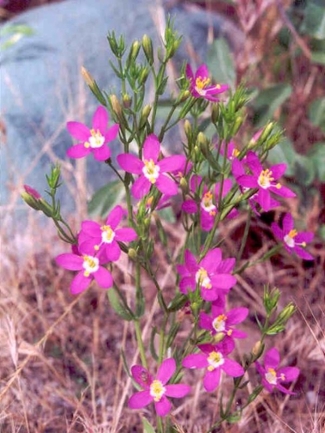
MinerAlert

MinerAlert
Gentianaceae
Canchalahua, canchalagua*, cachenlahuen, canchanlahue, cachen, cachinlagua, tlanchalagua
*The common name canchalagua can be confusing, as it is also applied in Peru and Mexico, to other very different plant species that belong to the sunflower botanical family (Schkuhria spp. and Pectis spp.).
Unknown.

This plant is native to Chile and is considered to be one of the most important medical plants by the Mapuche indigenous people of that nation. The plant is also found in southern Argentina.
The whole plant, especially the stalks and leaves.
The plant is boiled in water (decoction) and taken as a tea.
Cachanlahue is a bitter-tasting tea used in traditional medicine for various ailments including the following:

Photo: gonzaloantinwo.wordpress.com / Google images
Cachanlahue flowers
Safety/Precautions:
Before you decide to take any medicinal herb or herbal supplement, be sure to consult with your health care professional first. Avoid self-diagnosis and self-medication: Always be on the safe side!